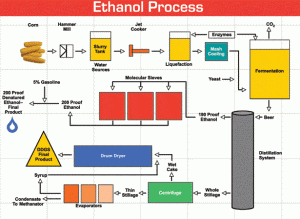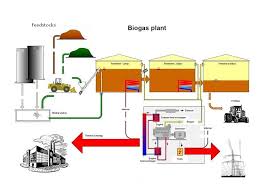A biofuel refers to a fuel that comprises energy from a recent carbon fixation. These fuels are harvested from living organisms. Instances of this carbon fixation occur in microalgae and plants. These fuels are produced by a biomass transformation. This biomass can be changed to appropriate energy containing matter in various ways. This biomass transformation can result in fuel in liquid, solid or gas form. New biomass obtained as a result of conversion can be used as biofuel.
The first generation biofuels are the fuels that have been originated from sources like sugar, starch, vegetable oil and animal fats. The oil is acquired by using the conventional practices of manufacture. Some of the most prevalent varieties of first generation biofuels are:
Bioalcohols: These are alcohols produced by using microorganisms and enzymes through the process of fermentation of sugar and starches. Worldwide ethanol is the most popular variety of bioalcohol whereas butanol and propanol are some of the lesser recognized ones.

Bioalcohols are harvested by fermentation of sugars derived from corn, wheat, sugar cane, sugar beets, molasses and any starch or sugar from which alcoholic drinks such as whiskey, can be prepared. The ethanol manufacture techniques used are distillation, enzyme digestion, drying and fermentation of the sugars. Methanol is presently manufactured from a non-renewable fossil fuel i.e. natural gas.
Vegetable oil: These oils can be utilized as a fuel or for cooking purpose. Quality is the key element that decides the usage of this oil. The oil having good quality is usually utilized for cooking. Straight unchanged edible vegetable oil is commonly not used as a fuel, but lower-quality oil can be used for this purpose. Recycled vegetable oil is progressively being transformed into biodiesel. Vegetable oil can also be utilized in numerous older diesel engines that do not use usual unit injection electronic diesel injection or rail methods. Combustion chambers in indirect injection engines are the finest engines for using vegetable oil.
Biogas: Biogas is primarily acquired after the anaerobic digestion of the organic substances. Biogas can also be manufactured by the biodegradation of waste matter which are directed to the biogas producing anaerobic digesters.

The product or residue can be simply used as a fertilizer or manure in agricultural. The biogas obtained contains high amount of methane which can be easily recuperated through the use of mechanical biological treatment schemes. Landfill gas is a less cleaner kind of biogas which is obtained by the use of anaerobic digesters found naturally, but the chief hazard is that these gases can be a serious threat if discharges into the atmosphere. Agriculturalists can produce biogas from cattle manure by the use of anaerobic digesters.
Biodiesel: This is the most famous type of biofuel frequently used in the European countries. This type of biofuel is largely produced using a procedure called transesterification. This fuel is chemically known as fatty acid methyl and is very analogous to the mineral diesel. This oil is manufactured by combining the biomass with sodium hydroxide and methanol. The chemical reaction afterwards yields biodiesel. After mixing up with mineral diesel, biodiesel is normally used for the various diesel engines. In numerous countries the producers of diesel engine confirm that the engine performs well even by using biodiesel. Beside its use as a fuel for vehicles in pure form, biodiesel is typically used as a diesel stabilizer to decrease levels of carbon monoxide, hydrocarbons and particulates from diesel-driven vehicle emissions.




